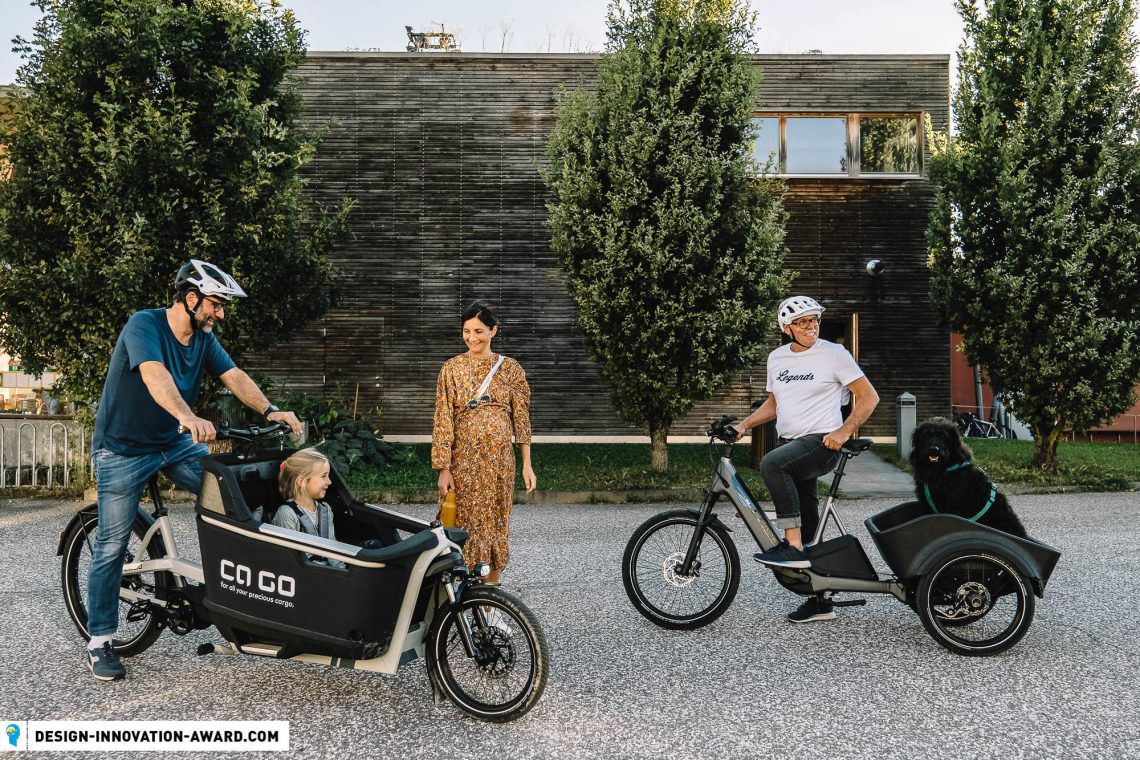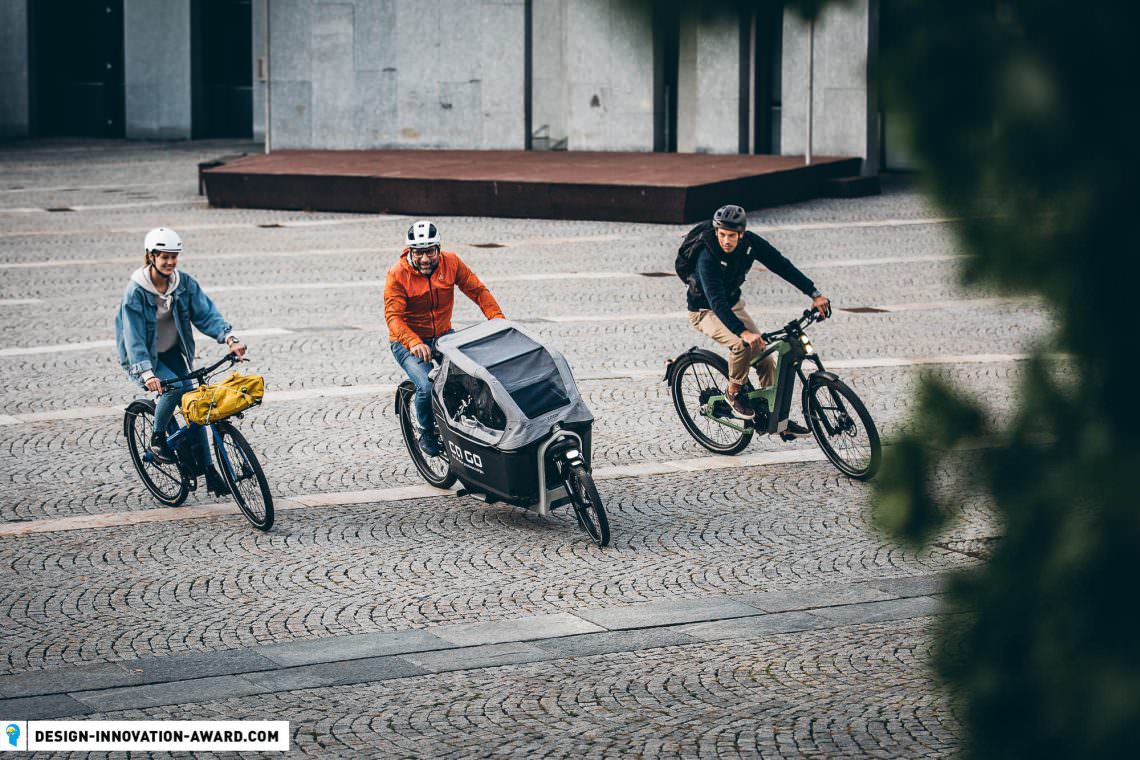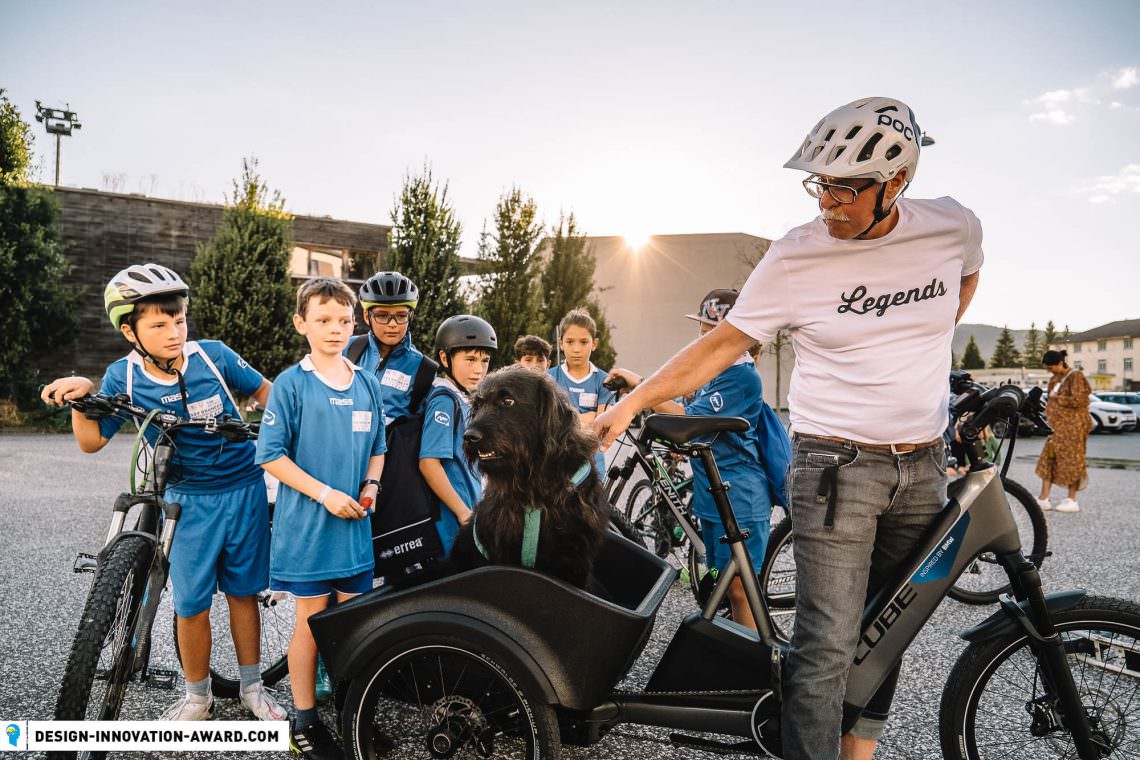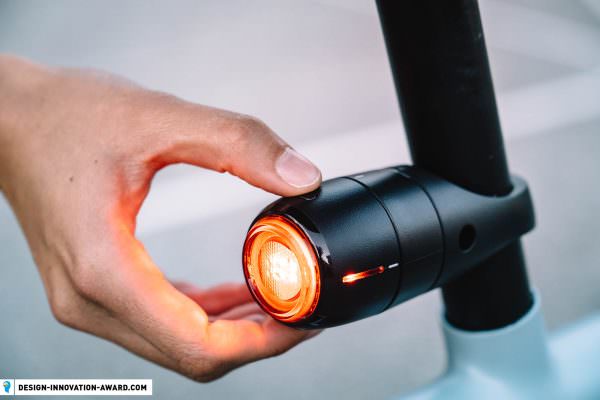The biggest (sub)urban mobility trends for 2022 – The future is now
It’s not just the metropolises of this world that are groaning under the stress of traffic jams, pollution, noise and a chronic lack of space – almost every other city is doing so. Fortunately, futuristic hyperloops, micro-cars and numerous mobility innovations are here to revolutionise traffic. We look at the megatrends of (sub)urban mobility and how you influence them!
- E-biking as a lifestyle – From settling down to being on the move
- The (sub-)urban mobility mix – It’s all in the combination
- The best mobility solution for your requirements
- Owning a bike or car? No, thanks!
- Our vehicles will be online – IoT in everyday life
- The mobility of the future and why it’s in our hands
Multi-modal mobility, the last mile problem, pop-up bike lanes: there’s no stopping the buzzwords thrown around in conversation surrounding modern mobility. The Design & Innovation Award 2022 is here to help you navigate it all, identifying the most important megatrends in urban and suburban mobility. We cover everything that will move us tomorrow.

Ebiking as a lifestyle – From settling down to being on the move
The past two years have amplified the challenges of our time, resulting in something amazing. In many places, the ebike hasn’t just become the preferred means of everyday transport, but it’s also turned into a lifestyle product and an absolute mainstream phenomenon: a status symbol, statement and collector’s item. And that’s no longer just for die-hard velo fans and bike nerds. Five years ago, most hobby athletes were still hesitant and marathon runners only talked about their ebikes behind closed doors, whereas today it’s considered good manners to make the trip to the offsite meeting by bike. Society is changing. Those who can, are choosing to leave their cars parked in the garage on regular weekdays. Those who can’t, still have a ton of fun on their bike in their free time.



Even outside of city centres and vibrant metropolises, people love getting on ebikes. In Europe, the commute between the suburbs and the urban environs is becoming noticeably more bicycle-friendly and riding to work isn’t just starting to be seen as a way to stay physically fit, but also help people take care of their mental well-being. We ride every day because we want to feel fast, proud, clever, crazy, adventurous, lively, fit or simply good! Ebikes are the tools that allow us to do all this, reinforcing these feelings or creating them in the first place. Let’s face it, cycling is a lifestyle.
The ebike is a statement.
It’s the hottest form of modern mobility.
The future of mobility is diverse, including everything from Onewheel, e-scooters and e-boards to public transport, car-sharing, carpooling and of course bicycles or ebikes. Do Segways still exist? Across the board, no other vehicle has benefited from the shift in the mobility sector as much as ebikes have and this trend will continue. In contrast to electric cars, it’s not the state subsidies that have driven the economic and social success of e-bikes, but the intrinsic demand of the market itself.



The (sub)urban mobility mix – It’s all in the combination
Please don’t get us wrong: we’re not out to preach automobile asceticism or advocate an unconditional two-wheel mandate. We believe there’s a tool for every job and as any mechanic worth their salt will tell you, there are many more tools than just a hammer. In the modern mobility mix, it all comes down to the proper combination. Due to the growing diversity and range of available tools, we have the opportunity not just to choose them according to certain phases of life, but also to combine different vehicles and services on a single route. Digitalisation has shortened transfer times, making it a lot easier to switch from public transport to the already booked bike-sharing bike. The options are already there and in many places a wider adoption only depends on simpler billing systems. Where the apps and systems work reliably, the commute can be divided between a wide variety of vehicles depending on the weather and your mood. In the future,the mixed forms of multi-modal mobility will offer increasing flexibility and ease.



The best mobility solution for your requirements
Of course, with the increasing segmentation of mobility solutions, the number of products that cater perfectly to your specific requirements is growing. In other words, the range of available vehicles is growing, giving you more choices and thereby increasing the probability that you’ll find the right tool for a supposedly unique use case. Transporting a washing machine by bike? Moving house without your own car? Cycling to the office and staying dry despite the rain? Easy. All of this is already possible. Compared to the previously mentioned mobility mix we already have highly specialised vehicles on the market today that can make our day-to-day lives easier while allowing us to enjoy the ride instead of just focusing on the destination. At the same time, products are becoming increasingly capable and we’re already seeing some bikes that can do it all. Commuting, shopping, a weekend trip with a barbecue and cold drinks, overnighters, going moderately off-road, getting to the ice cream parlour in style, transporting kids – the possibilities are endless with a full-suspension e-cargo bike. Moreover, the same bike can often be adapted in such a way to fit riders of different sizes!
There isn’t one perfect mobility solution for everyone, but everyone will find the perfect mobility solution for them.




Owning a bike or car? No, thanks!
As we already pointed out, a good toolkit consists of more than just a hammer. In the modern mobility mix, you’ll no longer have to invest in one fixed solution that will have to serve you for the next few years. Ownership has become optional thanks to monthly tickets, car-sharing subscriptions and vehicle pooling. The ownership of things is no longer an effective method to measure people’s mobility. That said, rural areas still have quite a bit of catching up to do with metropolitan regions that are already transitioning into a state of supply consolidation. It has long since turned out that the e-scooter concept only works in the city centre and certain circumstances. In more remote regions, people are still left with few alternatives to the expansion of public transport. New legal regulations for S-pedelecs could bring about an improvement here, but personal mobility continues to depend on private cars. Undoubtedly, it’s the metropolitan areas, their offers and their changing living concepts and town planning that are the catalysts of the mobility revolution, making the change possible. They’re allowing the most inefficient urban spaces in cities and suburbs – parking lots – to be redistributed and used.
City mobility is becoming more and more decentralised since the sharing model can only work if a corresponding offer is available within a walking distance from your home. This kind of decentralisation is only possible to a limited extent in rural areas. In that case, centralisation can help with the shift from carports to bike pooling or car-sharing. Be it a sharing pool for the apartment block, the neighbourhood or the business district. However, this requires even more commitment from the private sector than in the city. In these situations, best practice examples can only be developed with the help of creative pioneers and locals taking matters into their own hands.
Our vehicles will be online – IoT in everyday life
IoT, or the Internet of Things, describes everyday objects that are connected to the Internet. In the long term, the trend towards vehicles that are always connected will lead to autonomous buses, trains and cars. But we don’t have to look that far into the future to take advantage of this technology today. Be it updating your bike software, which makes visiting the service partner obsolete, or locating your bike to within a centimetre, which will allow us to leave our lock at home in the future: many products available on the market are already online, offering useful connectivity features and added value that we could not have dreamed of as little as 10 years ago. Potential thieves have learnt that you don’t try to steal smart bikes such as those from VanMoof, just like you don’t try to steal a Tesla. IoT technology doesn’t just have enormous potential for us as users but also for trade and industry itself. Given an extensive and holistic discussion of privacy and security, we can look forward to new products reaching the market very soon.



The mobility of the future and why it’s in our hands
Mobility is becoming electrified and, for many, vehicle ownership is no longer that important. We’re not out to question to what extent the advantages of electrically powered mobility are superior to fossil fuels, but rather to state that mobility is a fundamental cornerstone of our quality of life. Mobility must therefore be both sustainable and available at all times. However, in today’s times of upheaval, this goes beyond innovations in the mobility sector alone. It’s the same with the redesign of mobility and its basic features as it is with everything else: any strategy is only as good as its implementation and so the breakthrough of innovative mobility solutions requires acceptance and a certain willingness to change. Public policy can achieve this by improving infrastructure and offering incentives instead of bans, brands can do it with good and attractive products and we as end users can vote with our wallets.

The fact is that we are still at the beginning of a huge urban revolution that will not just fundamentally change mobility, but also our cityscape. It’s also a fact that these changes have the potential to significantly improve our quality of life. Just look at the Design & Innovation Award 2022 featuring numerous exciting new concepts that already make mobility more fun, safer and more sustainable than ever before. We can’t wait to test the products for the 2023 edition and look forward to the coming decade with all its innovations!
Words: Photos: Various


